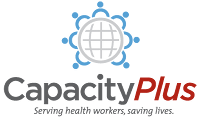Family Planning
Ensuring Human Rights in the Provision of Contraceptive Information and Services
These WHO guidelines provide recommendations for programmes as to how they can ensure that human rights are respected, protected and fulfilled, while services are scaled up to reduce unmet need for contraception. Both health data and international human rights laws and treaties were incorporated into the guidance. [from abstract]
- 544 reads
Soccer and Sexual Health Education: A Promising Approach for Reducing Adolescent Births in Haiti
This paper explores the effect of an innovative, integrative program in female sexual reproductive health (SRH) and soccer (or fútbol, in Haitian Creole) in rural Haiti by measuring the rate of births among program participants 15–19 years old and their nonparticipant peers. [from abstract]
- 722 reads
Social Behavior Change for Family Planning
Many maternal and child health programs want to add family planning (counseling, referrals or even services) into their programs. One way to get started is through social and behavior change. That means learning about the community’s family planning knowledge, attitudes and practices, and then creating strategies based on what is learned. Many health program and government staff would like to get the skills needed for this process—but time and resources are not available for a week(s) long training.This curriculum can share these useful skills without requiring a lot of time or resources.
- 502 reads
Successful mLearning Pilot in Senegal: Delivering Family Planning Refresher Training Using Interactive Voice Response and SMS
Health workers’ knowledge of contraceptive side effects increased substantially after the refresher training. The mobile phone approach was convenient and flexible and did not disrupt routine service delivery. Clear limitations of the medium are participants can’t practice clinical skills or have interactive discussions. Also, some participants had trouble with network reception. [from abstract]
- 701 reads
Condom Use Toolkit
Male and female condoms are the only contraceptive methods that provide dual protection against both unwanted pregnancy and sexually transmitted infections (STIs) including HIV. Through state-of-the-art scientific evidence, programmatic guidance, and implementation tools, the Condom Use Toolkit assists health policy makers, program managers, service providers, and others in planning, managing, evaluating, and supporting the provision of condoms. Many items in the Condom Use Toolkit can be adapted for use in specific country contexts and unique program circumstances. [from introduction]
- 419 reads
Family Planning 2011: Better Use of Existing Methods, New Strategies and More Informed Choices for Female Contraception
This paper explores recent developments in female contraception, using them to illustrate how adaptation of existing methods, improved service delivery and understanding contraceptive behaviour might increase contraceptive uptake and correct and consistent use, and how the development of new methods holds some promise for capitalizing on the potential non-contraceptive benefits. [from abstract]
- 601 reads
Knowledge and Acceptance of ‘Vasectomy as a Method of Contraception’ amongst Literate Married Men in Ekpoma, Nigeria
Women have been shown to accept surgical intervention methods of contraception than men. Despite the fact
that vasectomy is safer, simpler and effective, it is underutilized and relatively unknown in Nigeria. This study therefore, investigates the knowledge and acceptance of ‘vasectomy as a male contraceptive method in Ekpoma, Edo State, Nigeria.
- 6334 reads
Achieving the Goal of the London Summit on Family Planning By Adhering to Voluntary, Rights-Based Family Planning: What Can We Learn from Past Experiences with Coercion?
The purpose of this article is to answer the following questions: What constitutes coercion in family planning policy and program management and how do we use lessons of the past to prevent future instances of coercion? [from abstract]
- 435 reads
Young Women’s Access to and Use of Contraceptives: The Role of Providers’ Restrictions in Urban Senegal
Contraceptive prevalence is very low in Senegal, particularly among young women. Greater knowledge is needed about the barriers young women face to using contraceptives, including barriers imposed by health providers. [from abstract]
- 582 reads
Modern Contraceptive Method Mix and Factors Affecting Utilization of Modern Contraceptives among Married Women in Adigrat Town, Tigray, Northern Ethiopia
This study was conducted to assess the contraceptive method mix and factors associated with modern contraceptive use among currently married women in Adigrat town. [from abstract]
- 805 reads
Intention to Use Long-Acting and Permanent Family Planning Methods Among Married 15-49 Years Women in Debremarkos Town, Northwest Ethiopia
This study assessed the intention and factors associated with long-acting and permanent family planning methods among married 15-45 years women in Debre markos town to look at the local context. [from abstract]
- 874 reads
Family Planning (Planin)
A 16-hour training providing information to Community Health Workers regarding defining family planning and describing various methods of family planning, explaining advantages of family planning at the individual, family, and community levels, identify cultural and social barriers to practicing family planning and counseling individuals and couples about the benefits of family planning and how to choose an appropriate method of family planning. [adapted from resource]
- 557 reads
Population, Family Planning and Reproductive Health Policy Harmonization in Bangladesh
Over the past 30 years, Bangladesh has achieved significant economic and human development progress, and demonstrated impressive policy as well as programmatic commitment to lowering the fertility level. However, its future socioeconomic prospects may be hampered by its population growth rate, depending on how quickly the fertility rates decline and at which point they stabilize. [from abstract]
- 485 reads
The Impact of Family Planning Programs on Unmet Need and Demand for Contraception
This article aims to shed additional light on this issue by analyzing data drawn from recent Demographic and Health Surveys conducted in 63 developing countries. The first section reviews general levels and trends in unmet need, demand, and use over the course of the fertility transition. The second section presents different types of evidence of program effects, including results from a controlled experiment and from country case studies. The evidence indicates a program impact on both unmet need and demand.
- 413 reads
Voluntary Family Planning Programs that Respect, Protect and Fulfill Human Rights: A Conceptual Framework
This paper presents a practical approach for realizing human rights as part of voluntary, high-quality family planning programming. The framework provides a pathway for voluntary family planning programs to respect, protect, and fulfill human rights as they set out to improve health and achieve ambitious family planning goals. This comprehensive framework brings together human rights laws and principles with FP quality of care frameworks to assist policymakers, program managers, donors, and civil society with program design, implementation, and monitoring and evaluation.
- 394 reads
Making Health Care about People: Applying People-centered Care Principles to Family Planning Improvement Work in West Africa
The World Health Organization (WHO) has developed a new strategy on people-centered health care that places a strong focus on the re-orienting the health system as a whole, including the importance of engaging community and patient groups. ASSIST principles of people-centeredness are complementary to the WHO strategy, particularly with respect to coordination and continuity of care, information, and the micro-level interactions between a client and the health care service delivery team that promote or hinder people-centeredness.
- 545 reads
The Effects of Decentralization on Family Planning
Decentralization of family planning is a critical concern for policymakers as international family planning commitments and the expansion of decentralization reforms become more common. Building on the latest research, this paper presents a family planning and decentralization analytical framework that was developed by the USAID-funded Health Policy Project to help key stakeholders better understand family planning decentralization processes, identify potential challenges and opportunities, and guide decentralization reforms. [from abstract]
- 509 reads
Burkina Faso Country Profile: Meeting People's Needs with IA/PMs
Burkina Faso faces a daunting family planning (FP) challenge. While the use of any modern contraceptive method
more than tripled between 1993 and 2006, the unmet need for FP remains high, at 31.1% among married women. Long-acting methods (IUDs and implants)and permanent methods (female sterilization and vasectomy) are the most effective
of all FP methods. However, use of long-acting and permanent methods of contraception (LA/PMs) in Burkina Faso remains
low, at 13% of the overall method mix. [adapted from source]
- 471 reads
Evaluating the Coverage and Cost of Community Health Worker Programs in Nampula Province in Mozambique
In 2012, Pathfinder conducted a study to explore whether CHWs who are intended to promote family planning as part of an integrated package of services do communicate with beneficiaries about family planning, and what actions women take based on these messages. The study also explored whether CHWs are reaching the poor, marginalized and vulnerable, and examined the costs of implementing the CHW component of the SCIP project. [from executive summary]
- 563 reads
Islam and Family Planning: Changing Perceptions of Health Care Providers and Medical Faculty in Pakistan
Training health care providers and medical college faculty about the supportive nature of Islam toward
family planning principles addressed their misconceptions and enhanced their level of comfort in providing
family planning services and teaching the subject. [from synopsis]
- 676 reads
Increasing Access to Family Planning in Ghana through Policy Change: Task-Sharing to Enable Auxiliary Nurses to Provide Contraceptive Implant Services
Health care is labor intensive and managers strive to identify a mix of staff that can safely deliver a range of services using available resources. In many developing countries,primary-level workers, auxiliary staff, and community health workers (CHWs) are being trained to assume roles and perform functions traditionally reserved for mid- or high-level cadres of health workers as a means of optimizing the number and capacity of available providers.
- 624 reads
Capacity Building of Institutions in the Health Sector: Review of Experiences in Uttar Pradesh, Uttarakhand and Jharkhand.
This report documents the efforts and contributions made by USAID through the Innovations in Family Planning Services (IFPS) Project towards capacity building and strengthening of public and private institutions in the health sector
in India. The report highlights the support rendered at the national level and in three Indian states: Uttar
Pradesh, Uttarakhand, and Jharkhand. [from introduction]
- 567 reads
Context-specific, Evidence-Based Planning for Scale-Up of Family Planning Services to Increase Progress to MDG 5: Health Systems Research
Local health planners are in a prime position to devise feasible context-specific activities to overcome
constraints and increase met need for family planning to accelerate progress towards MDG 5. [from abstract]
- 592 reads
Ethiopia: An Emerging Family Planning Success Story
From 1990 to 2011, contraceptive use in Ethiopia increased nine fold and the total fertility rate fell from 7.0 to 4.8. What are the main elements of this success? We posit that the four most significant factors are: political will, generous donor support, non-governmental and public–private partnerships, and the government’s establishment of a network of health extension workers. In this study, we look at these factors and how their interaction increased the proportion of women having both the desire to use and ability to access contraceptives. [adapted from abstract]
- 529 reads
Focus on Community-based Family Planning: Partnership with Uganda Ministry of Health
The Ugandan Government has an ambitious goal to reduce unmet need for family planning (FP) from its current 34% to 10% over the next 10 years. This brief shares experiences and lessons from capacity building for Family Planning at the national and district levels in Uganda.[adapted from introduction]
- 543 reads
Improving Access to Family Planning Services in Rural Areas
Family planning (FP) services have been available in Nepal for over 50 years, most extensively from the public sector health system, with nongovernmental agencies involved from the very beginning. These services are largely delivered by
facility-based service providers, except for the distribution of condoms and pills and, occasionally,
injectables. Community workers such as VHWs and MCHWs could potentially fill the gap if they were given the necessary knowledge and skills. [adapted from resource]
- 672 reads
'I Am Who I Serve'—Community Health Workers In Family Planning Programs
For decades, family planning programs and other public health programs have utilized community health workers (CHWs) as a way to reach and serve disadvantaged populations, often immigrants leery of government sponsored programs.Despite decades of experience, however, and a substantial body of evidence documenting their effectiveness and cost-effectiveness, these efforts continue to be hampered by the lack of a dedicated funding stream—a problem now being addressed by individual states and potentially by a little-noticed provision in the federal health care reform legislation that could provi
- 469 reads
An Analysis of Pre-Service Family Planning Teaching in Clinical and Nursing Education in Tanzania
In efforts to improve the quality of FP (Family Planning) services in Tanzania, including provider skills, this study sought to identify gaps in pre-service FP teaching and suggest opportunities for strengthening the training. [from abstract]
- 630 reads
A Forecasting Guide for New and Underused Methods of Family Planning
This guide provides direction to programs that want to forecast for new and underused methods (NUMs) of family planning. It supports program managers and others involved in forecasting as they plan to (1) introduce a contraceptive technology for the first time in a country, and/or (2) position an underused method for scale up. [from introduction]
- 509 reads
Family Planning and Linkages with US Health and Development Goals
To examine linkages between family planning and health and development outcomes, the CSIS Global Health Policy Center led a delegation to Ethiopia in February 2014.
- 654 reads




